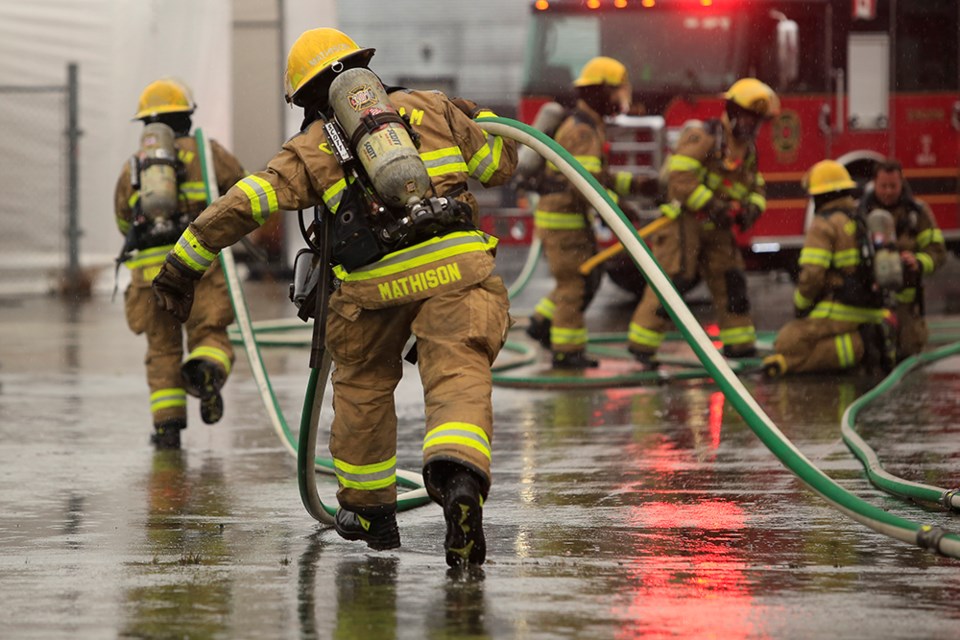A new training facility could be on the way for Coquitlam Fire/Rescue after city council approved moving forward with a design and budget for the project last week.
Chief Jim Ogloff said the current 700-sq. ft., two-storey structure no longer meets the department’s needs. He added that the 32-year-old concrete block building is also “showing signs of fatigue” and requires expensive repairs.
“Certainly, the scope of the project is much different than the facility you see there today,” he told councillors. “What we are looking at is definitely incorporating more of the unique conditions that you see in the larger scope of buildings that we have in our community.”
According to a staff report, the new facility would be four storeys and made out of shipping containers. It would feature two “burn rooms,” smoke generators, a room with entanglement props to simulate rescues, and a stairwell used for confined-space operations.
While a full detailed design has yet to be completed, the staff report estimates the cost of the project will be $1.8 million, with $500,000 from this year’s budget and the remaining $1.3 million coming from next year’s budget. Another $70,000 in annual operating revenue would also be needed for maintenance and utilities.
The money for the facility could come from revenue the city receives through its casino operating agreement, the document stated.
Ogloff said some revenue could be generated through an agreement with neighbouring fire departments that may be interested in using the training centre. Coquitlam, Port Coquitlam and Port Moody already share a training curriculum and the departments benefit from learning together as they are often called upon to provide mutual aid during major emergencies.
Currently, Coquitlam uses a training facility in PoCo but Ogloff said the burn building at that city’s main fire hall is limited because it does not permit water foam suppression. As well, it uses wood combustibles, which the report stated “pose an unnecessary exposure to potentially dangerous byproducts.” Ogloff said the new facility in Coquitlam would use propane or natural gas to simulate flames and heat in training exercises without firefighters having to inhale smoke.
“Staff is already exposed through their regular daily work,” he added. “I don’t see the need for that for staff training.”



